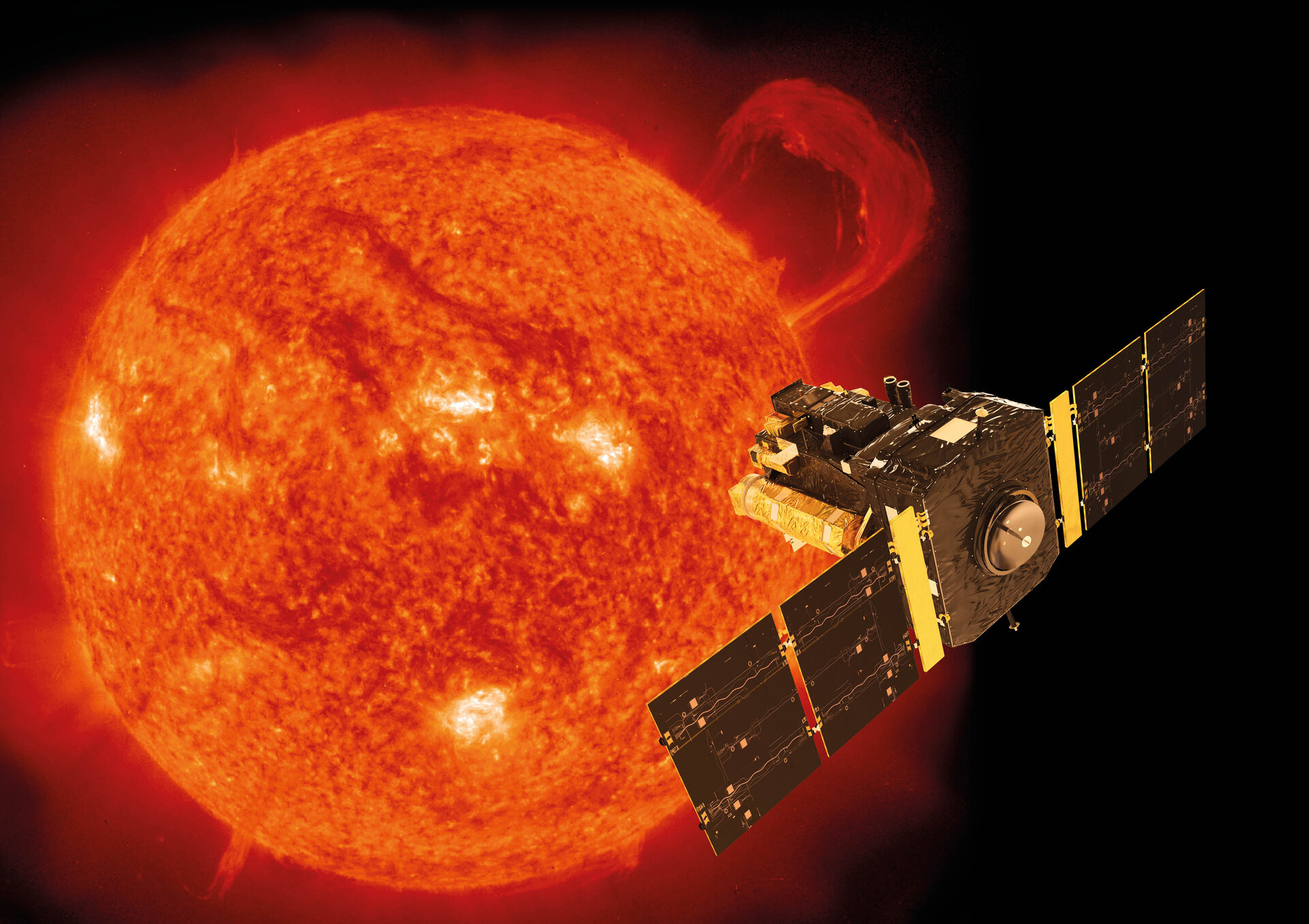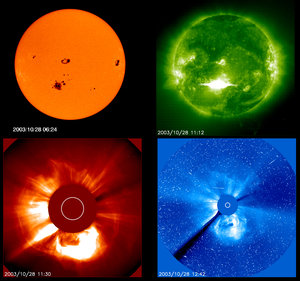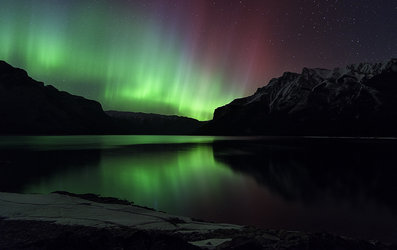Live view of the Sun from SOHO
From 1.5 million kilometres away from Earth, the Solar and Heliospheric Observatory (SOHO) constantly watches the Sun, returning spectacular pictures and data of the storms that rage across its surface.
On this page you can see the latest images from two instruments on board SOHO: the Extreme ultraviolet Imaging Telescope (EIT) and the Large Angle Spectrometric Coronagraph (LASCO). The images are automatically updated throughout the day.
Images from EIT
 |
 |
| 28.4 nm / 2 000 000°C | 19.5 nm / 1 600 000 °C |
 |
 |
| 17.1 nm / 1 000 000 °C | 30.4 nm / 80 000 °C |
Images from EIT give scientists their routine weather maps of the Sun. Note the bright, twisted clouds of hot gas, revealing storminess. Compare these with the dark, calm regions called 'coronal holes'. Occasionally a solar flare appears, as a small, intensely bright flash.
The four different colours depict different wavelengths of ultraviolet light emitted by the Sun – invisible to our eyes but detected in magnificent detail by the EIT. Each colour, or wavelength, is produced by hot gas at a specific temperature: yellow shows gas at around 2 million degrees Celsius, green is 1.6 million degrees, blue is 1 million degrees, and red is 80 000 degrees.
If the EIT images show 'CCD BAKEOUT', they are temporarily unavailable. Click here for more information.
Images from LASCO
 |
 |
| LASCO C2 | LASCO C3 |
Using a round mask to block direct sunlight, LASCO allows us to see the extremely faint light coming from the outermost part of the Sun’s atmosphere – the corona. Strangely, the corona is hundreds of times hotter than the Sun’s surface.
The red image (C2) is more zoomed in on the region close to the Sun, whilst the blue image (C3) gives a much wider view. The white ring at the centre depicts the Sun's true size.
In these images, look for gigantic eruptions called coronal mass ejections, visible briefly as broad bubbles curving outwards from the Sun. More commonplace features are bright spikes of relatively dense gas, protruding straight out in various directions. If you're lucky, you may spot a comet as a small white arrowhead pointing directly towards the Sun.
This video merges decades of footage from the C2 and C3 cameras from 1998 to 2020, revealing the immense power of our star.















 Germany
Germany
 Austria
Austria
 Belgium
Belgium
 Denmark
Denmark
 Spain
Spain
 Estonia
Estonia
 Finland
Finland
 France
France
 Greece
Greece
 Hungary
Hungary
 Ireland
Ireland
 Italy
Italy
 Luxembourg
Luxembourg
 Norway
Norway
 The Netherlands
The Netherlands
 Poland
Poland
 Portugal
Portugal
 Czechia
Czechia
 Romania
Romania
 United Kingdom
United Kingdom
 Slovenia
Slovenia
 Sweden
Sweden
 Switzerland
Switzerland





























